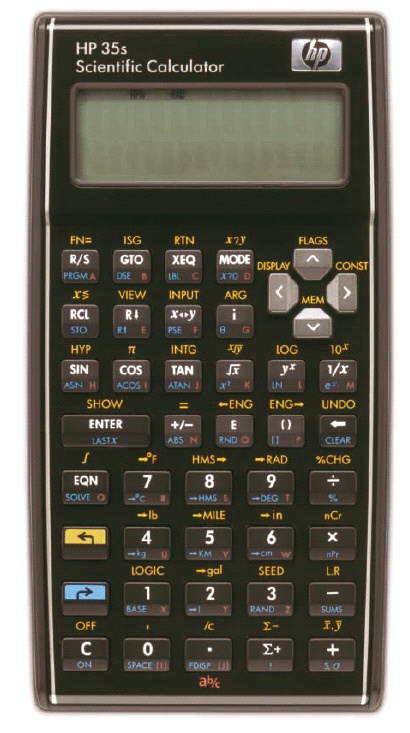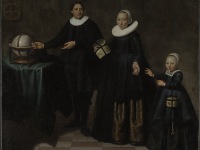
HP 35s Calculator (1972)
I guess almost nobody except a few mathematicians and computer scientists have ever heard of the Australian computer scientist Charles Leonard Hamblin, who passed away on May 14, 1985. And also most of my fellow computer scientists might not have heard of him. But, one of his major contributions to computer science was the introduction of the so-called Reverse Polish Notation. Does that ring a bell?
Charles Leonard Hamblin – Early Years
Interrupted by the Second World War and radar service in the Australian Air Force, Charles Leonard Hamblin’s studies included mathematics, physics, and philosophy at the University of Melbourne, and he obtained a doctorate in 1957 at the London School of Economics. From 1955, he was lecturer at N.S.W. University of Technology, and later professor of philosophy at the same place, until his death in 1985, during which time the organization had been renamed The University of New South Wales.
Reverse Polish Notation
In the second half of the 1950s, Hamblin worked with the third computer available in Australia, a DEUCE computer manufactured by the English Electric Company. For the DEUCE, he designed one of the first programming languages, later called GEORGE, which was based on Reverse Polish Notation. His associated compiler (language translator) translated the programs formulated in GEORGE into the machine language of the computer, in 1957. Hamblin’s work is considered to be the first to use Reverse Polish Notation, and this is why he is called an inventor of this representation method.
The Push-Pop Stack
Regardless of whether Hamblin independently invented the notation and its usage, he showed the merit, service, and advantage of the Reverse Polish way of writing programs for the processing on programmable computers and algorithms to make it happen. The second direct result of his work with the development of compilers was the concept of the push-pop stack (previously invented by Alan M. Turing for the ACE in 1945)[1], which Hamblin developed independently of Friedrich Ludwig Bauer and Klaus Samelson, and for which in 1957 he was granted a patent for the use of a push-pop stack for the translation by programming languages
Building on Lukasiewicz
Hamblin became aware of the problem of computing mathematical formulae containing brackets results in memory overhead, which was rather critical at these times, because memory was rather small and expensive. One solution to the problem has already been prepared by the famous Polish mathematician Jan Lukasiewicz’s, inventor of the original Polish notation, which enables a writer of mathematical notation to instruct a reader the order in which to execute the operations (e.g. addition, multiplication, etc) without using brackets. Polish notation achieves this by having an operator (+, *, etc) precede the operands to which it applies, e.g., +ab, instead of the usual, a+b. Hamblin, with his training in formal logic, knew of Lukasiewicz’s work. Hamblin improved this principle to save additional storage by putting the operator behind the operands and thus, enabling the computer to make use of a storage, which did not require an address.
Turning to Philosophical Questions
In the 1960s Charles Leonard Hamblin began to turn more and more to philosophical questions. In addition to an influential introductory book on formal logic, Fallacy’s work, which is still regarded as a standard work and in print today, is dedicated to the treatment of misconceptions by traditional logic and with which he brought formal dialectics to life. Hamblin later contributed to the development of modern temporal logic. In 1972 he independently rediscovered a form of duration calculus (interval logic).
This might sound rather weird to you, but 30 years ago using one of those sophisticated HP calculators that forced you to use and — more important -think RPN, made you the undisputed number one among all the other geeks.
The Joys of RPN, [6]
References and Further Reading:
- [1] Churchill’s Best Horse in the Barn – Alan Turing, Codebreaker and AI Pioneer, SciHi Blog
- [2] “Everything you’ve always wanted to know about RPN but were afraid to pursue – Comprehensive manual for scientific calculators – Corvus 500 – APF Mark 55 – OMRON 12-SR and others” (PDF). T. K. Enterprises. 1976.
- [3] Parsing/RPN calculator algorithm at rosettacode.org
- [4] Online implementation to translate standard notation to RPN
- [5] Charles Leonard Hamblin at Wikidata
- [6] The Joys of RPN, MathWithoutBorders @ youtube
- [7] Timeline of Calculators, according to DBpedia and Wikidata





